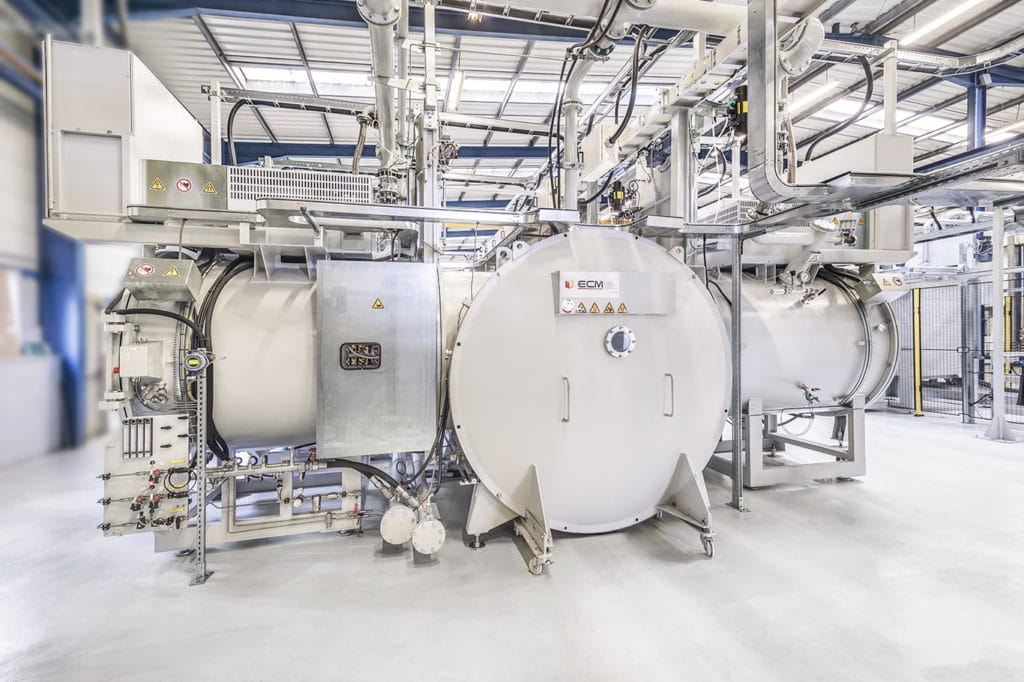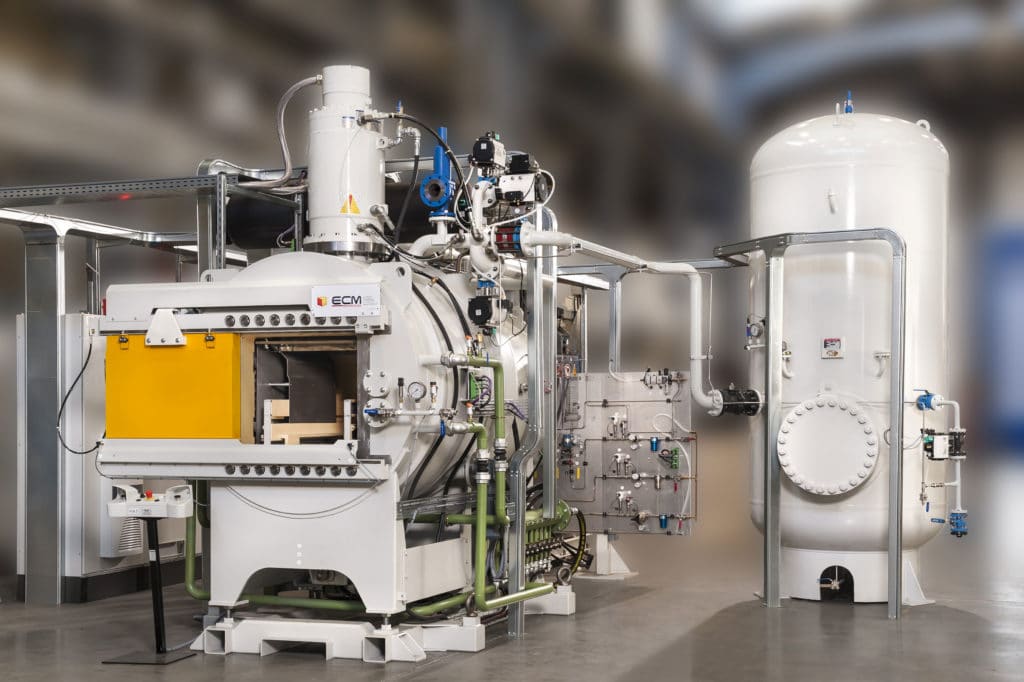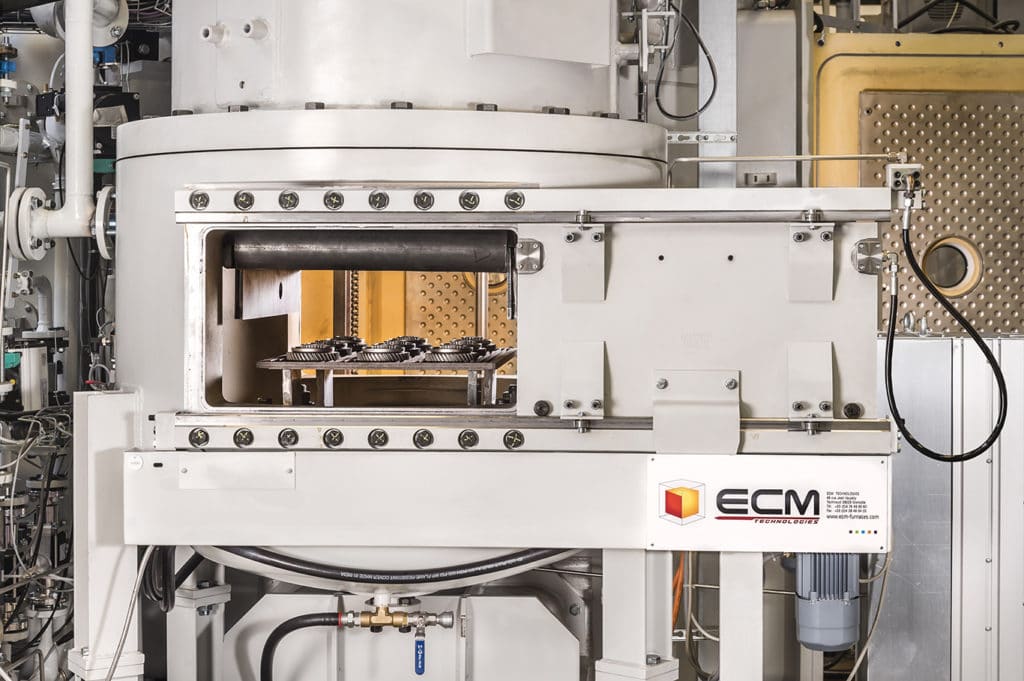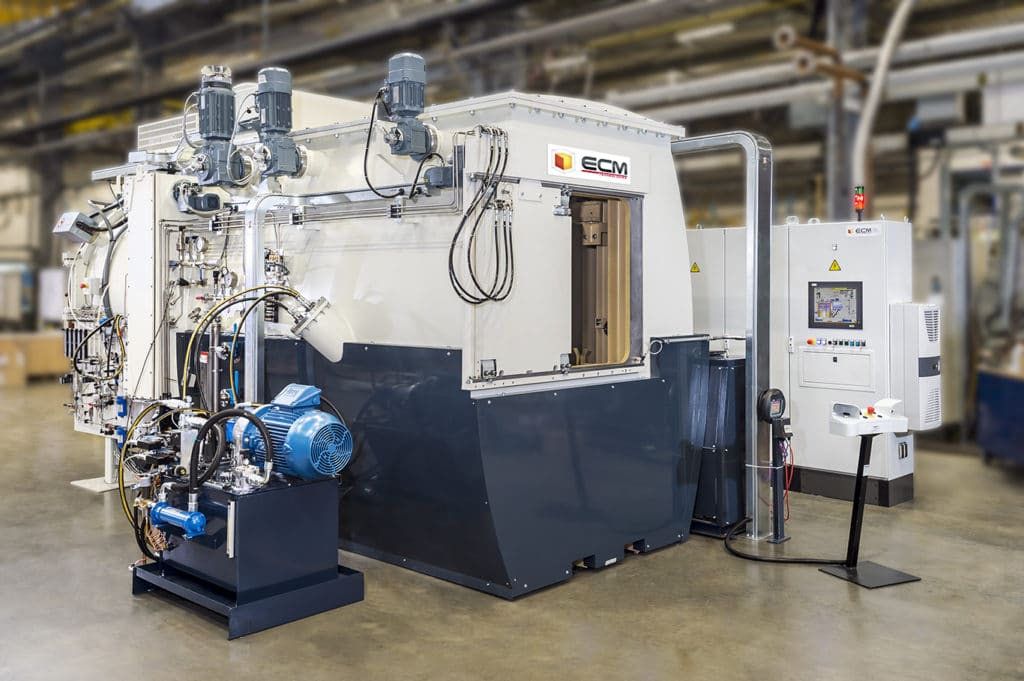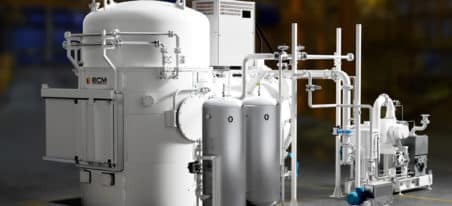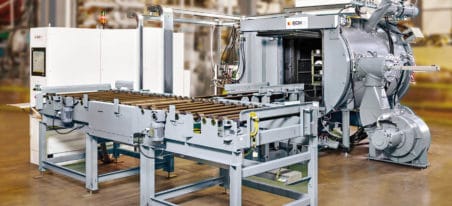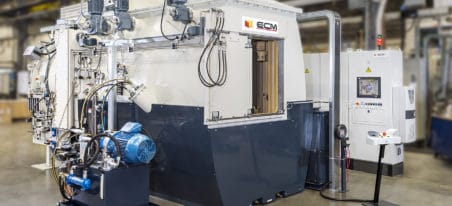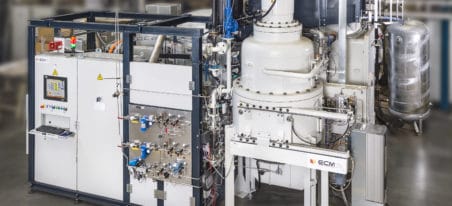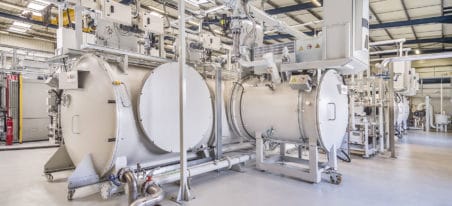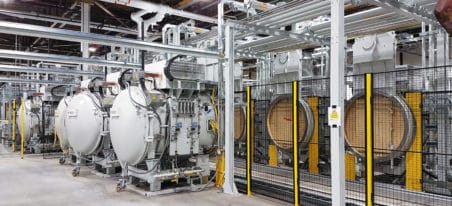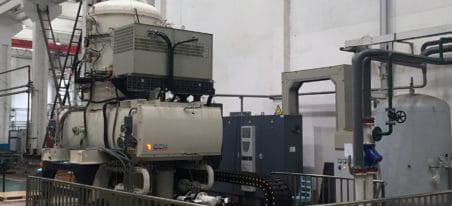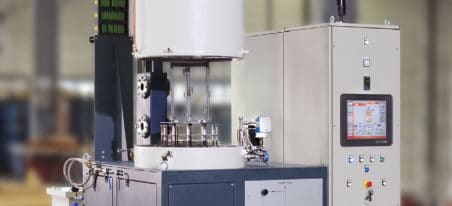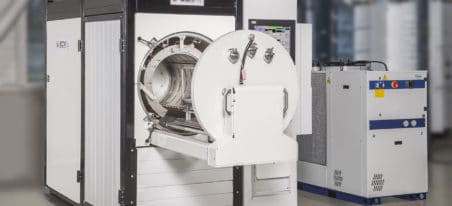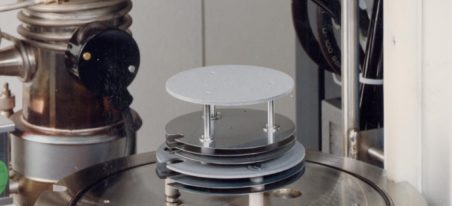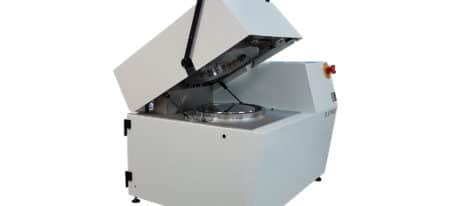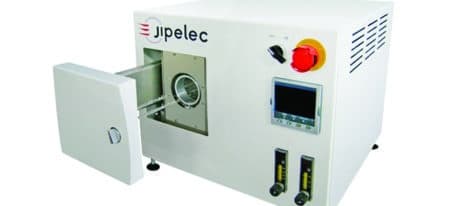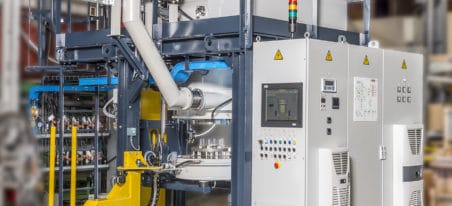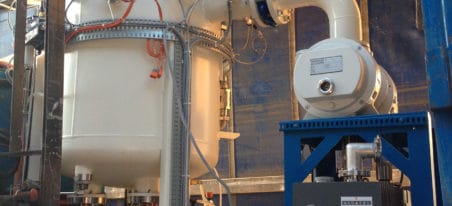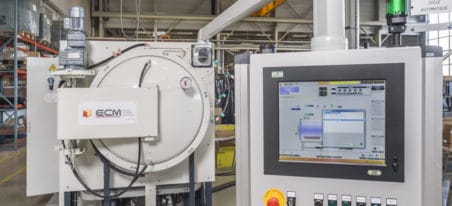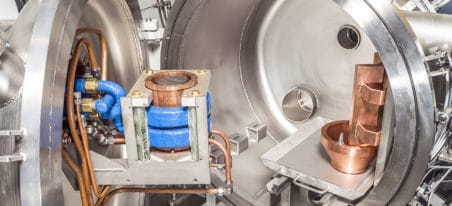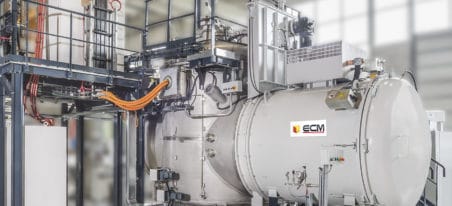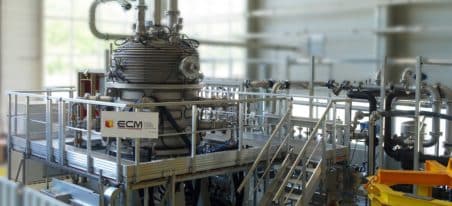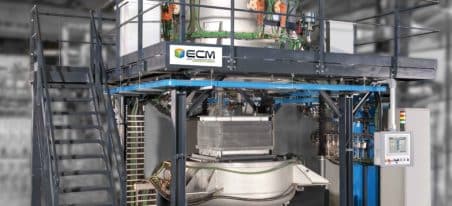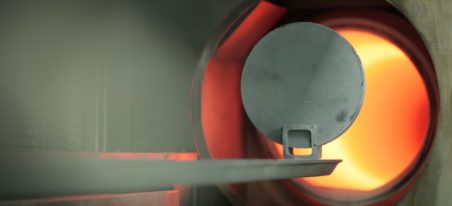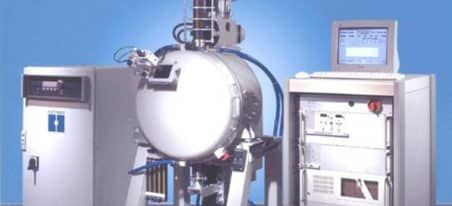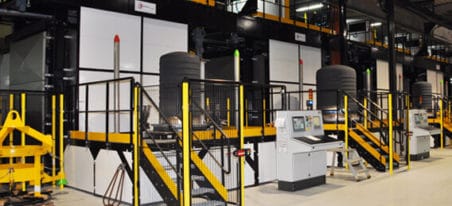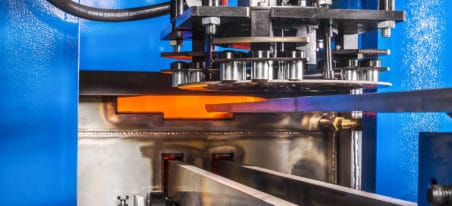Low pressure carburizing (LPC), also known as vacuum carburizing or vacuum case hardening is achieved under vacuum, in a vacuum furnace.
Low pressure carburizing
LOW PRESSURE CARBURIZING (LPC)
Since 1980’s, ECM Technologies developed Infracarb®, the patented name for LPC processes. Infracarb® process is fulfilled under low pressure. The carbon donator gas is Acetylene C2H2 – used during the enrichment phases, and nitrogen N2 is used during the diffusion phases. The process temperature is generally higher than traditional carburizing, between 880 and 1,050°C thanks to the vacuum technology. The high temperature processes help to drastically reduce carburizing cycle time in comparison to traditional atmosphere carburizing: up to 50%, depending on the carburizing depth.
ECM Technologies’ ICBP® low pressure carburizing installations use the Infracarb® patented process. Infracarb® consists in an alternation of enrichment phases and diffusion phases (C2H2 hydrocarbon and a neutral gas N2 for diffusion). The number and the length of the phases depend on the targeted carburizing depth.
Infracarb® process includes a simulation software CBPWin to allow precise adjustment of recipe parameters to achieve perfect control of the carburizing depth. Acetylene is a synthesis gas, its purity can be controlled providing exceptional chemical reactivity (dissociation rate is over 60%) which allows very complex parts such as diesel injection components to be carburized.
Very simple physical parameters (temperature, length of the gas injection phases, flows and pressures) enable to reach precise and optimal results. Large surface areas can be carburized thanks to acetylenes’ high enrichment power.
Vacuum carburizing brings in many advantages in comparison with traditional atmosphere carburizing. This process allows :
- to avoid oxidation of parts
- a better carburizing homogeneity
- an excellent repeatability of the process from load to load
- to fit in tight metallurgical tolerances regarding the carburizing depth
- hardness parameters.
This heat treatment process is environmentally friendly as it significantly reduces CO2 emissions and harmful chemical products.
The LPC process is followed by a martensitic oil quenching or gas quenching to obtain the desired hardness at the core and at the surface of the parts. The selection of the quenching media depends of the quenching ability and the geometry of the materials and parts to be treated.
INFRACARB’S MAIN CHARACTERISTICS
- Alternated injection C2H2, N2 as an option NH3 can be used for LP Carbonitriding
- A constant working pressure and temperature
- The amount and the length of the enrichment phases depend on the carbon concentration and the case depth required
INFRACARB® ADVANTAGES FOR VACUUM CARBURIZING COMPARED TO ATMOSPHERIC PROCESSES
- Better carburizing efficiency due to the use of acetylene
- No inter-granular oxidation thanks to the absence of oxygen (IGO)
- Perfectly controlled and repeatable case depth with limited tolerances
- Regarding Gear case hardening, better pitch to root consistency of case depth
- Ability to choose the recipe and the surface carbon content independently for each load
- Environmentally friendly process: less gas consumption, no CO/CO2 rejection
- Mixing of C2H2 with N2 to adjust carbon penetrability
- Heat treatment time drastically reduced with the use of higher temperatures
- Excellent esthetic aspect of the parts
- Improved fatigue resistance with combination of low pressure carbonitriding and stop quench
Discover our range of low pressure carburizing furnaces.
ICBP furnaces range :
- ECO : to replace sealed quench furnaces
- MONO : single chamber furnace
- DUO : to replace quench and sealed quench furnaces
- NANO : the most compact installation for low pressure carburizing and cabronitriding
- FLEX : multi chamber furnace : modular concept
- JUMBO : multi chamber furnace : modular concept
- PFTH : vertical vacuum oil quenching furnace


